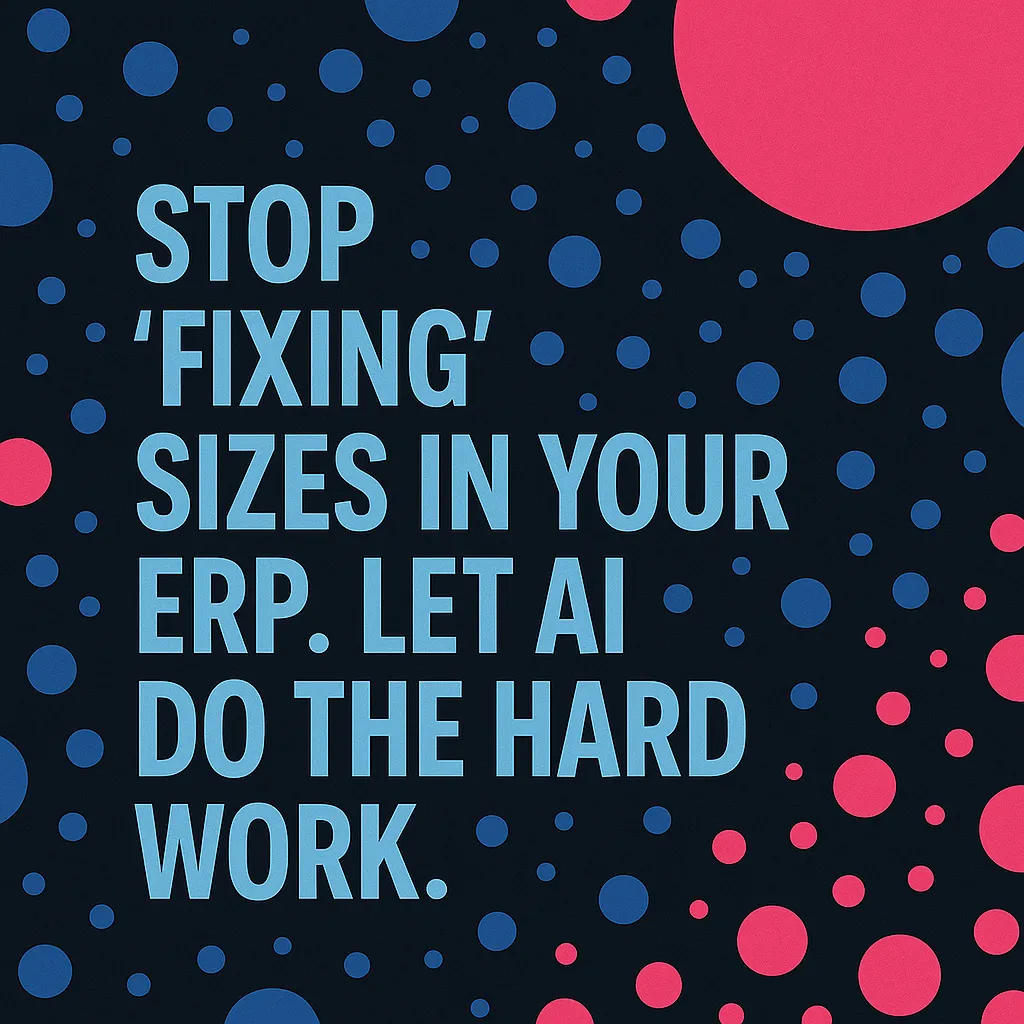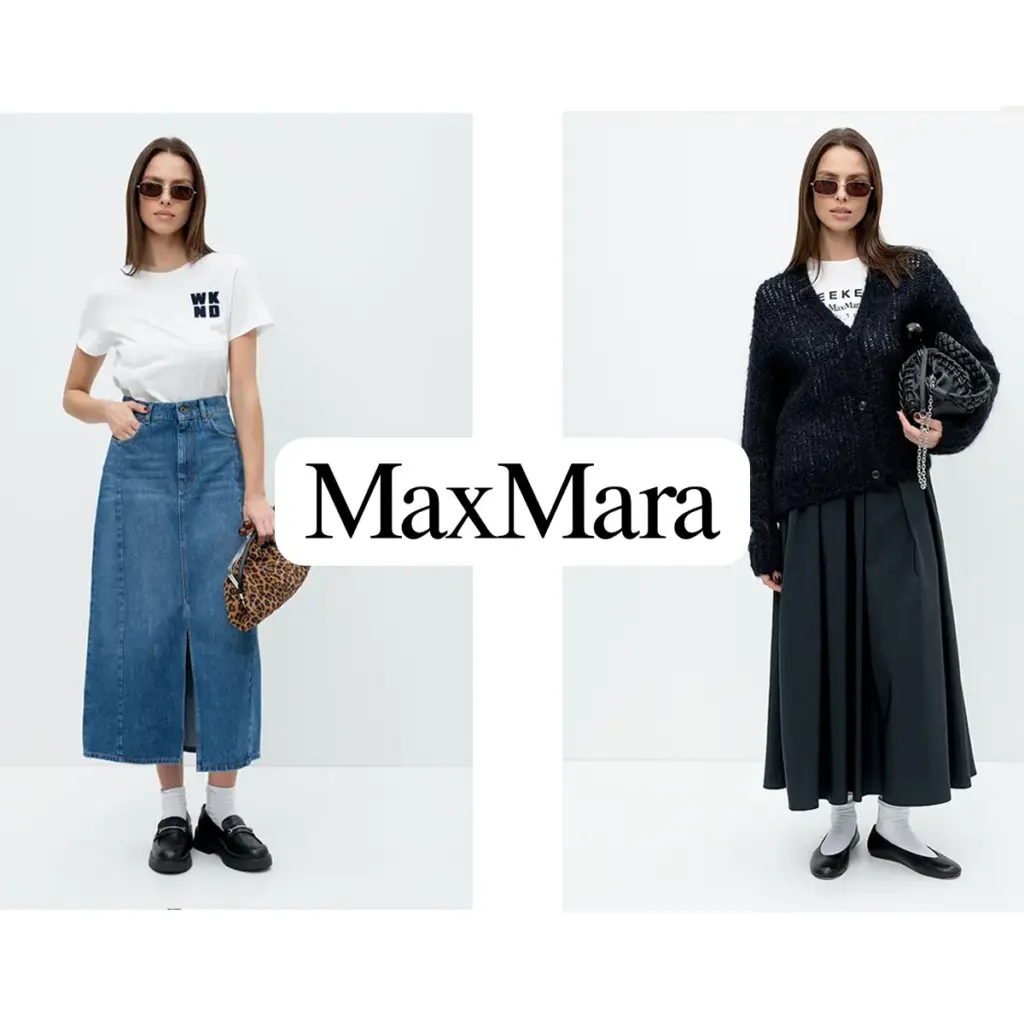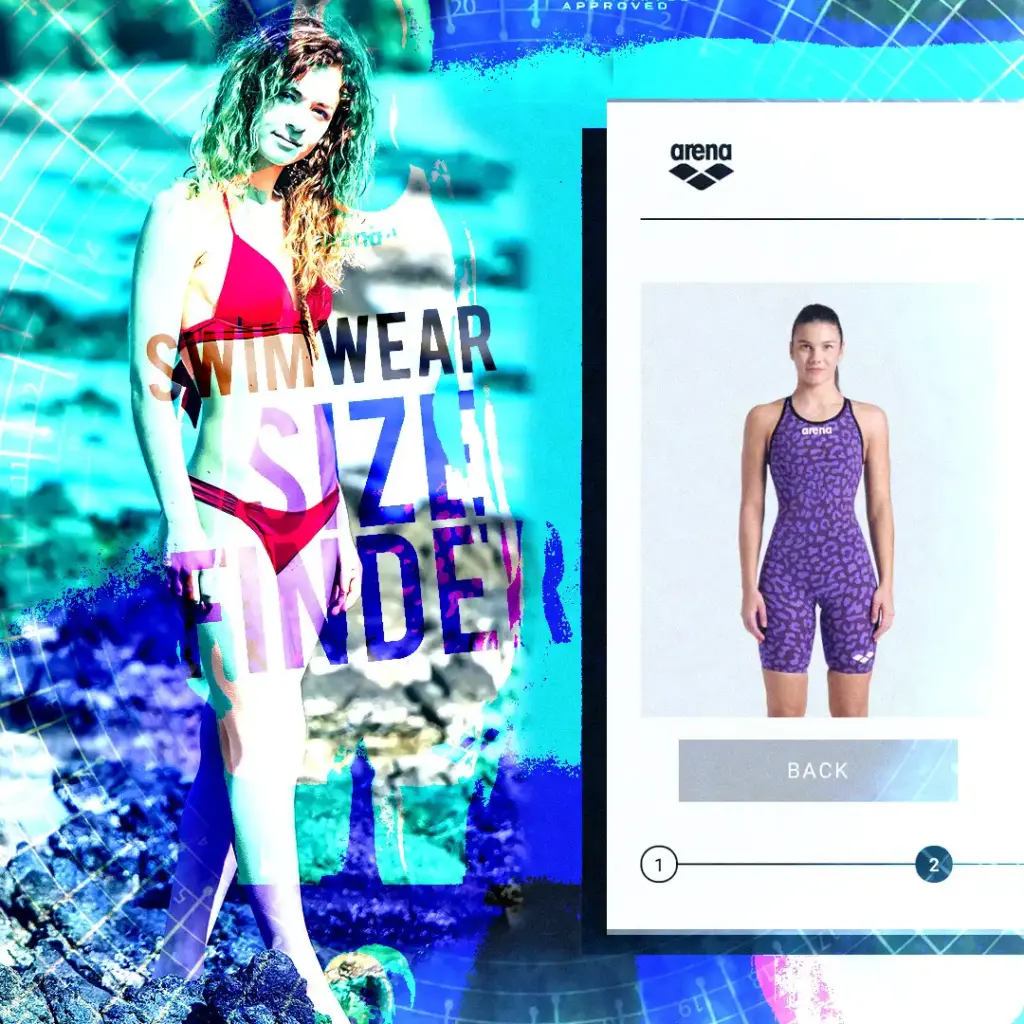Stop “Fixing” Sizes in Your ERP. Let AI Do the Hard Work.
Multi-brand fashion retail is built on variety.
Variety of styles, brands, fits, origins… and of course, size systems.
And that last part is where the chaos lives.
Most multi-brand retailers are stuck in the same loop:
- Suppliers send size data in different formats and systems
- Teams “clean” or normalise that data in the ERP/PIM
- Size charts are manually adjusted
- AI or size-finder tools are plugged in after this manual rework
It feels organised. In reality, it’s often doing more harm than good.
In this article, I’ll argue something that may feel counter-intuitive:
Stop editing sizing nomenclature in your ERP.
Preserve what suppliers send and let AI connect the dots.
If you get this right, you unlock better sizing recommendations, lower refunds, and far more reliable analytics, especially if you’re running a multi-brand or marketplace model.

If you sell multiple brands, you already know there is no such thing as “universal sizing”:
- Brand A’s EU 38 fits like Brand B’s EU 40
- “M” in one Korean brand is closer to “XS” in a US brand
- A slim-fit shirt and a relaxed-fit shirt have the same nominal size but completely different feel
- The same SKU can fit differently in another colour or production batch
Now multiply that across:
- Hundreds or thousands of brands
- Tens of thousands of SKUs
- Constant seasonal assortment changes
Your ERP ends up as the place where all this lands. And the natural instinct is:
“We need to tidy this up.”
So teams start:
- Converting everything to “International S/M/L”
- Forcing UK → EU → US conversions
- Overwriting supplier sizes with internal codes
- Merging or rounding sizes (“we don’t want half sizes showing in filters”)
On paper, it looks cleaner. But for AI and for real humans that “cleaning” often destroys the very signal you need.
The messy truth of multi-brand sizing
The hidden cost of “fixing” sizes in ERP
Let’s look at what actually happens when you normalise supplier sizes too aggressively.
- You lose information that AI could use
Example:
- Brand A: Size 2, Brand B: S, Brand C: EU 36
- ERP: map all three to internal S and forget the original label
On the surface, this looks tidy.
Under the hood, AI now sees three identical “S” values with zero context.
You’ve taken away the nuance that differentiates these sizes in the real world.
You’ve just removed granularity that:
- Some customers would have bought
- AI could have used to detect subtle fit patterns
- Could have helped identify which exact size has the best “keep” rate
- You create artificial consistency that shoppers don’t experience
Your system says:
“All these are ‘M’ now – job done.”
But your returns tell another story:
- One “M” is too tight for 60% of shoppers
- Another “M” fits perfectly
- Another is constantly returned as too big
Your ERP now pretends things are harmonised that, in reality, are not.
Any analytics, BI, or AI on top of that will be misled.
- You make life harder for predictive AI
Modern sizing AI (like Prime AI) doesn’t need “perfect” size charts.
It needs truthful raw data and real-world outcomes:
- What was the original label?
- What did people actually buy?
- Who kept it, who returned it, and why?
If you overwrite or “massage” size data too early in the pipeline, AI can’t see:
- Which brands behave differently
- Which sizes in a chart are “off”
- Which colourways or batches deviate from the norm
You’re effectively blurring the picture before you let AI analyse it.
The better approach: keep the mess, add structure on top
The answer is not to give up and accept chaos.
The answer is to separate:
- What you store vs. what you display
A simple but powerful pattern:
- Keep the raw supplier fields intact
- supplier_size_label
- supplier_region (EU/UK/US/JP, etc.)
- Any extra annotations (short, tall, petite, plus, etc.)
- Add your own “display size” layer for UX
- display_size for filters and front-end
- But never delete or overwrite the raw size in the database
- Add rich product attributes
- Fit type (slim, regular, oversized)
- Category, sub-category
- Fabric composition
- Intended gender, region, season
- Let AI do the mapping
- The job of the AI is to learn:
“For people like this, in this brand, in this product, what size actually works?”
Instead of forcing your ERP to be the “truth” of sizing, you let it be the collector of facts.
AI then becomes the interpreter.
Light bulb moment
Here’s the shift in thinking:
Your job is not to guess how all brands should line up on one size chart.
Your job is to preserve reality and give AI enough signal to learn from it.
Practical example:
- You sell 2,000 brands
- Many have incomplete or conflicting size charts
- Some don’t send charts at all
Old thinking:
“We need a universal chart and to map all brands into it.”
New thinking:
“We let Prime AI learn from how customers actually buy, keep, and return these products, even if size charts are incomplete or missing.”
Because in the end, the only question that matters is:
“For this shopper, on this product, what is the most likely size they will keep?”
How Prime AI connects the dots (without you rewriting sizes)
Prime AI Clothing Size Finder PRO is built specifically for this multi-brand reality.
Here’s how it works when you don’t tamper with supplier sizes:
- Ingest raw data
- We take your product feed as it is: brand, size label, category, fit, colour, etc.
- No demand for “perfect” or standardised charts.
- Learn from behaviour, not assumptions
- We analyse sales and returns by product ID and colour ID.
- If Brand X – Size M – Navy fits differently from Brand X – Size M – Black, we detect it and treat them differently.
- We don’t care what the chart claims should fit. We learn what does fit.
- Operate at SKU and individual shopper level
- For returning shoppers, Zero-Input Sizing gives a recommendation with no quiz at all, based purely on their past purchases and keep/return behaviour.
- For new shoppers, the Quiz-Based engine adapts its logic using the learned patterns from your data.
- Respect all the nuance you kept
- Because you haven’t flattened everything to “S/M/L”, the engine can see:
- Which brands run small or large
- Which size within a chart is the “problem child”
- How fit differs by fabric, cut, colourway, season
- Because you haven’t flattened everything to “S/M/L”, the engine can see:
This is why Prime AI can move the needle where others can’t:
- Influence 50-80% of transactions
- Deliver on average 35% fewer returns (orders that followed the recommendation vs. no recommendation.)
- Improve CVR and AV, especially in multi-brand environments with complex assortments
What you can do next (practical steps)
Beyond profit and performance, frictionless sizing changes how shoppers feel.
When they see a recommendation appear automatically, it signals trust, intelligence, and care.
It feels personalised, effortless, and premium, exactly what luxury and lifestyle retailers aim to deliver.
It quietly says:
“We know you.”
And that emotional connection leads to higher loyalty and repeat purchases.
It also aligns perfectly with the broader trend of retailers encouraging customers to shop via branded apps, where identity, purchase history, and size recommendations seamlessly merge into one unified, predictive experience.
Why Prime AI Leads the Predictive Sizing Era
If you’re a multi-brand or marketplace retailer, here’s a concrete action list:
- Audit where you rewrite sizes today
- Where do you convert or overwrite supplier sizes in ERP/PIM?
- Where do you throw away nuance “to make it look nicer”?
- Introduce separate fields
- Keep supplier_size intact.
- Use another field for display_size on the front end.
- Start capturing better outcomes data
- Make sure return reasons are structured.
- Keep product-level and, ideally, colour-level data.
- Stop asking vendors “which brands you cover?”
- The right question is:
“Can your AI work when size charts are incomplete, inconsistent or missing, and still learn from our data?”
Talk to someone who lives in this problem every day. This is exactly the space Prime AI operates in across multi-brand, multi-region retailers.
Prime AI as your sizing partner, not just a widget
Prime AI is not another “nice overlay” on your PDP.
It’s a predictive sizing engine designed for the real mess of multi-brand retail.
- It thrives on raw, imperfect data.
- It connects the dots you shouldn’t be manually forcing.
- It turns chaos into a consistent experience for each shopper: “This is your size.”
If you’re tired of endlessly “fixing” sizes in your ERP and still not seeing meaningful refund reduction, it may be time to change the approach, not just the tool.
Audit how you currently handle size data, and if you’d like a second opinion, we’re happy to review your setup and show you how Prime AI would approach it.







